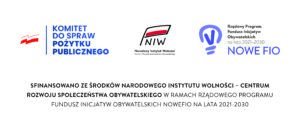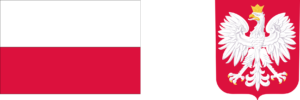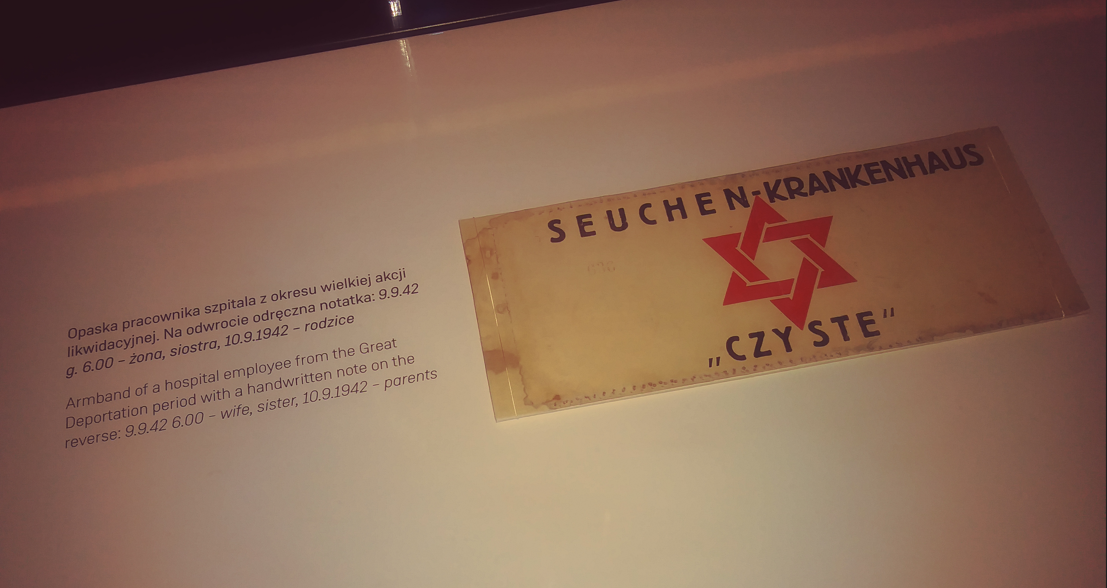

Wednesday, June 14, 2023 This is another day of a study visit of a group of German students and scientists to Warsaw as part of the project “Who was the executioner and who was the victim?”, financed by NIW CRSO under the NEW FIO program.
That day we planned a walk entitled “Jewish history and the Warsaw Ghetto tour”.
The tour included pre-war Jewish life in Warsaw, the history of the Warsaw Ghetto, and the current revival of the Jewish community. First, we spent some time at Castle Square and walked the streets of the Old Town, noting that it was rebuilt from the ruins and is now our pride and favorite meeting place not only for Warsaw residents, but also for tourists from all over the world.
The start of the main part of the tour was in Grzybowski Square, where buildings have been preserved from the times when Warsaw was home to the largest Jewish community after New York and the world center of Yiddish culture. Our guests learned, among other things, that when Hasidim lived together with socialists, the Esperanto language was created, and Isaac Bashevis Singer, the future Nobel Prize winner, wrote his first short stories. Grzybowski Square is still a place of Jewish life today – nearby there is the only preserved pre-war synagogue and the seat of the Jewish community.
Then, together with our guests, we visited the Warsaw Ghetto, where almost half a million Jews were imprisoned. We learned about the history of hunger and death, but also of thriving culture, fashion and love. We walked through the fighting area of the Warsaw Ghetto Uprising in 1943 – the first armed, civilian resistance against the Nazis in occupied Europe – to the place from where the wagons left for the extermination camps.
Along the way, we also noticed such objects as Próżna Street (the only preserved Jewish street), the Nożyk Synagogue, the seat of the Jewish community, the remains of the ghetto wall, the former Jewish children’s hospital, an installation commemorating the footbridge on Chłodna (one of the ghetto monuments), the battlefield of the Uprising in Warsaw Ghetto, Muranów, i.e. a memorial estate built on the ruins of the ghetto, Monument to the Heroes of the Warsaw Ghetto, Miła 18 – a monument standing above the bunker where the headquarters of the Jewish Combat Organization was located, and a memorial trail that leads to Umschlagplatz – the place of deportation, among others. to Treblinka. This was symptomatic, because we planned to visit Treblinka the next day.
Warsaw was shown to us from this perspective by a licensed guide, Paweł Szczerkowski. This choice turned out to be the proverbial bull’s-eye. His enormous knowledge, commitment, tact and perfect English meant that the group absorbed information, asked questions and covered – despite fatigue – subsequent kilometers of the route.
After a short rest and a moment for reflection, it was time to visit two museums in Warsaw – Polin and the Warsaw Uprising Museum. The latter especially made a huge impression on our guests from Germany. Once again, there were a lot of questions and a lot of important answers. Those interested could also visit the Jewish Cemetery at ul. Okopowa. It is one of the largest Jewish necropolises in Europe and the largest collection of Jewish art in the world.
We can say with full confidence that Wednesday was a real “living history lesson”, important both for us, Poles, and for Germans.










